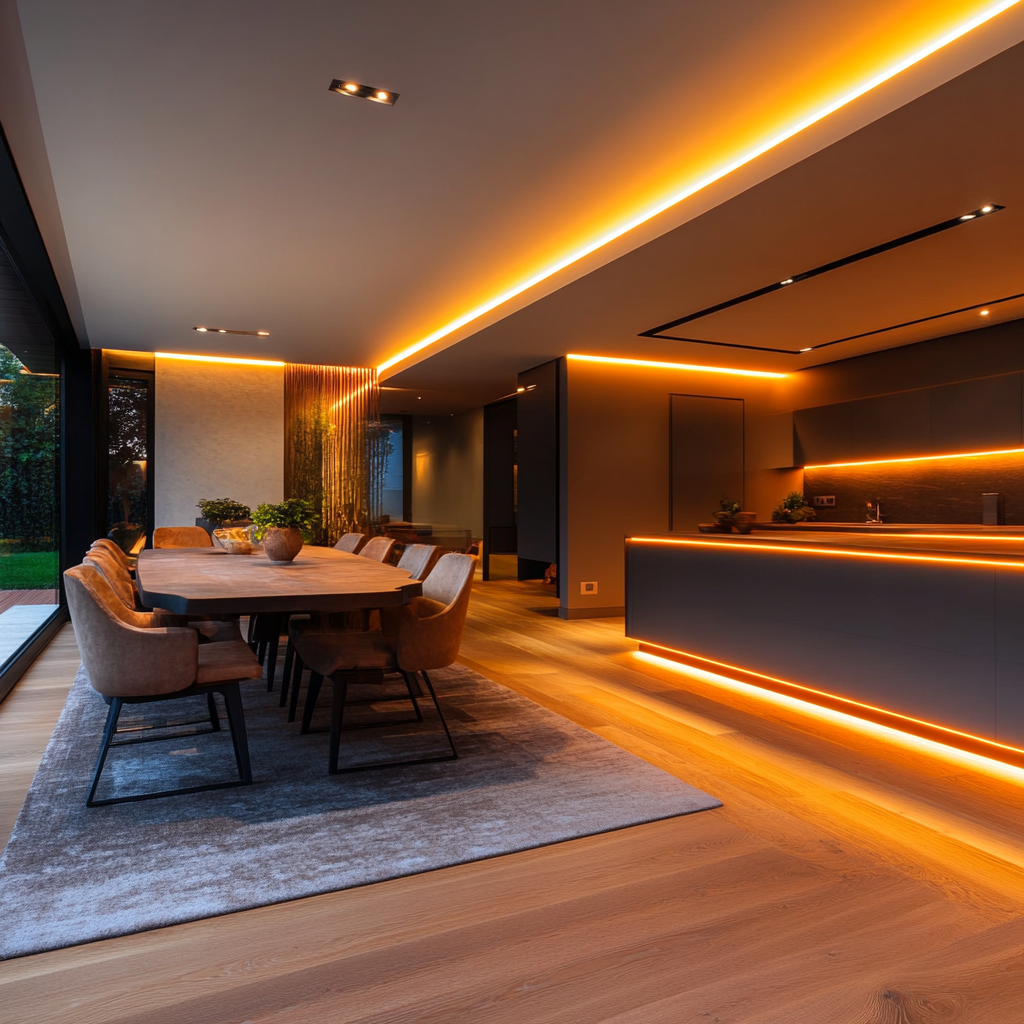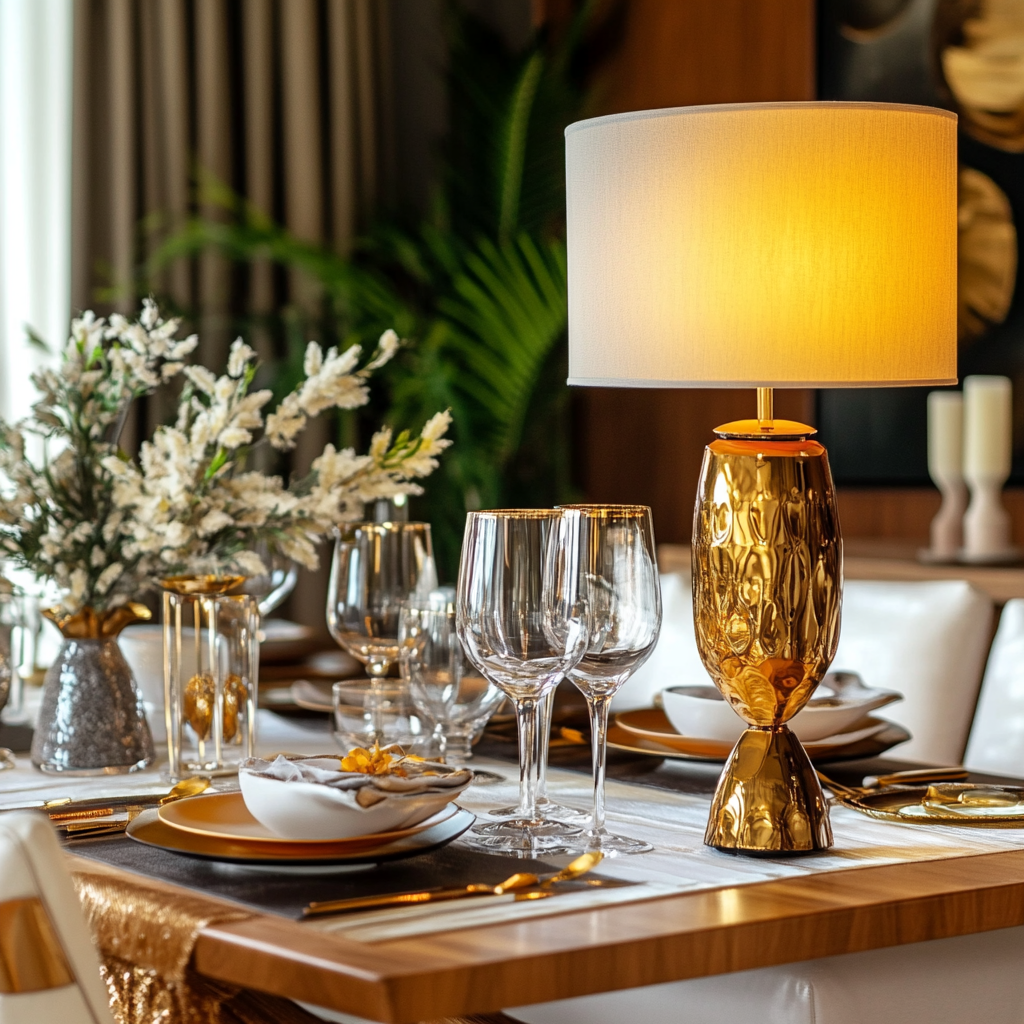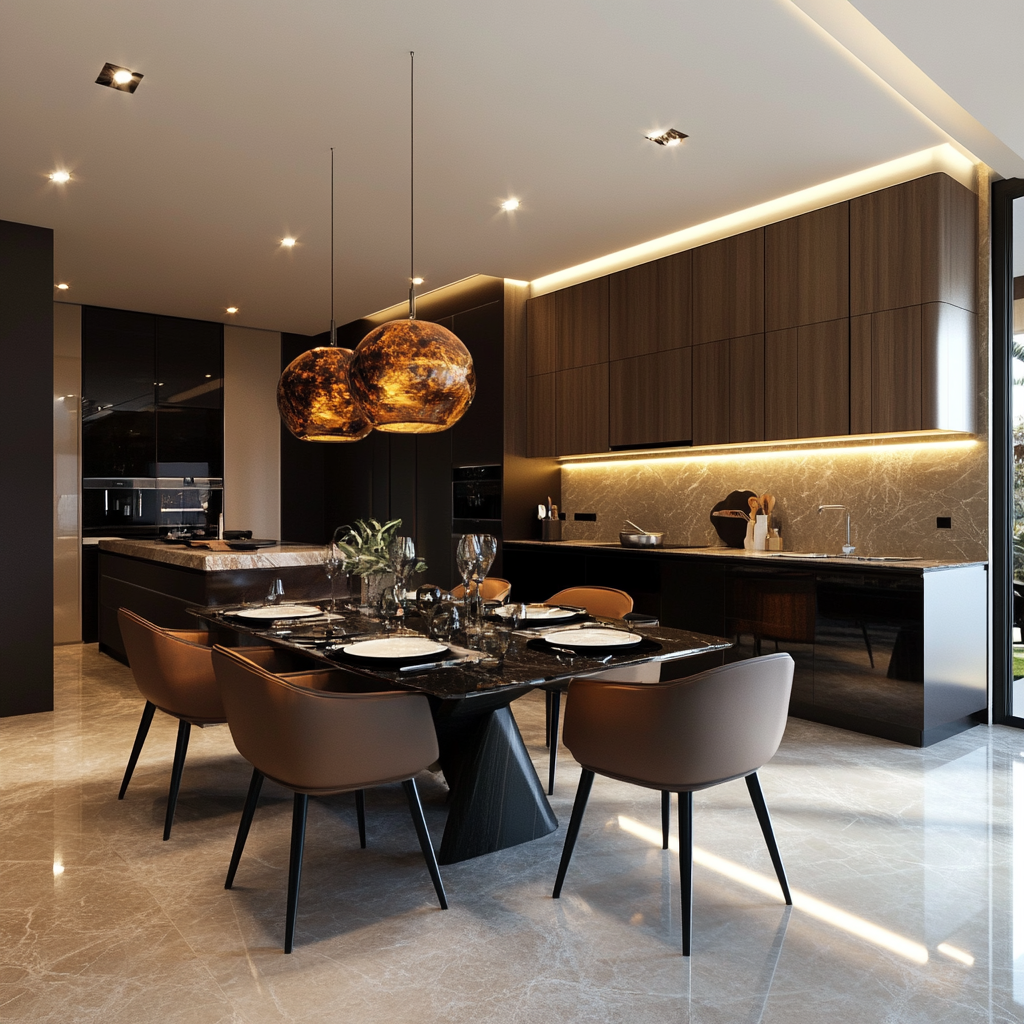In the world of lighting, there is a subtle but important distinction that is often overlooked: the difference between white light and warm white light. While light is a general term that encompasses different shades and color temperatures, warm white light provides a specific atmosphere that is deeply rooted in comfort and coziness. But what makes warm light so special? And how does it differ from white light? In this blog, we will answer these questions and explain more about the effect of warm light in your dining room.
The big difference between warm white light and white light
Warm white light and white light are often used interchangeably, but they refer to different color temperatures and moods in your dining room. Before we explain the differences, it is important to understand what Kelvin means.
Kelvin (K) is a unit that measures the color temperature of light sources. It describes the tint of light emitted by a lamp or light source. In the world of lighting, color temperature determines whether light feels "warm" or "cool." Light sources with lower Kelvin values emit a warmer, more reddish light, while light sources with higher Kelvin values emit a cooler, bluer light.
Warm White Light
Warm white light has a colour temperature that ranges from 2000K to 3000K. These shades create a cosy and inviting atmosphere, ideal for a dining room where comfort and relaxation are key. A bulb with a lower colour temperature adds warmth to the space and makes it the perfect choice for an atmospheric meal and cosy conversations.
White Light
White light has a slightly higher color temperature, usually between 3000K and 4000K. This type of light is brighter and more stimulating, making it ideal for functional spaces such as the dining room. It provides a bright and refreshing light that helps keep the dining area active and lively. For a dynamic atmosphere and good visibility while eating, choose bulbs with a color temperature of 4000K.
LED Lamps
LED bulbs offer a wide range of color temperatures and can therefore meet different needs. If you are looking for an LED bulb that has a warm appearance, similar to traditional incandescent bulbs, choose an LED bulb with a color temperature around 2700K. If you want a bright and vibrant light, like natural daylight, an LED bulb with 4000K is an excellent choice.
TL lighting
Fluorescent lighting, also known as TL lighting, is known for its efficiency and brightness. The abbreviation TL stands for 'Tube Light' and refers to fluorescent lamps that produce light by heating or igniting gases. Although TL lighting typically has a cooler colour temperature than traditional incandescent bulbs, it can be less suitable for a warm and cosy dining room. At Suitta, we strive to provide lighting solutions that are both functional and atmospheric, so you can find the perfect light for your dining space.
Why choose LED lighting?
LED lighting offers numerous advantages over traditional lighting options such as incandescent, halogen and fluorescent tubes. Below we highlight some of the key benefits of LED lighting.
Long lifespan
LED bulbs have a much longer lifespan than traditional bulbs. They can last up to 50,000 hours. This means you will need to replace bulbs less often, resulting in lower maintenance costs and less hassle.
Safety of the lamp
LED lighting contributes to a safe environment because LED lamps emit much less heat compared to incandescent and halogen lamps. In addition, they provide direct light without warm-up time. This ensures immediate lighting, which is crucial in emergency situations or in areas where rapid responses are required, such as stairwells, corridors and parking garages.
Energy saving lamps
LED lights consume significantly less energy than traditional lighting. They convert more of the electricity into light instead of heat, which results in higher energy efficiency. This translates into significant energy savings and lower electricity bills.
Environmentally friendly
Thanks to their lower energy consumption and longer lifespan, LED lights produce less waste and have a smaller impact on the environment. In addition, LED lights do not contain harmful substances such as mercury, which can be found in fluorescent tubes.
Choose LED lighting and experience the benefits in terms of sustainability, cost savings and safety.
Which Suitta lamp gives warm light?
View all our LED lamps with a dimmable function here, better for the environment, the end result and your wallet.



Leave a comment
This site is protected by hCaptcha and the hCaptcha Privacy Policy and Terms of Service apply.